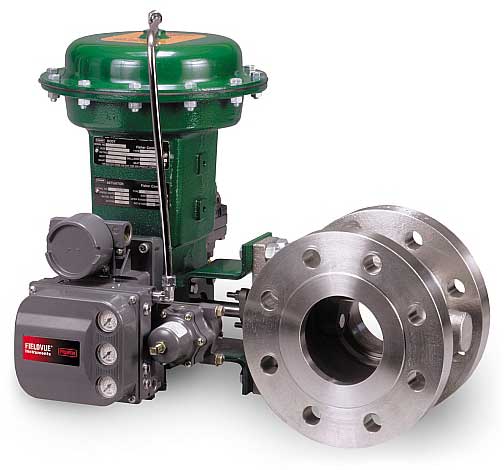Maximizing System Control with High-Performance Control Valves
Maximizing System Control with High-Performance Control Valves
Blog Article
Achieve Seamless Integration and Control With Quality Structure Automation Controls
In the realm of contemporary structure monitoring, the relevance of top quality structure automation controls can not be overemphasized. Embracing high quality building automation controls is not simply an issue of benefit yet a tactical imperative for companies intending to optimize their facilities' performance and sustainability.

Development of Building Automation Controls
Throughout the previous couple of decades, the evolution of constructing automation controls has substantially transformed the method buildings are handled and operated. Constructing automation systems mostly concentrated on basic features such as controlling ventilation, air, and home heating conditioning (COOLING AND HEATING) systems. As technology advanced, these controls have become a lot more innovative, allowing for a larger variety of structure systems to be incorporated and taken care of centrally.
The development of constructing automation controls has seen a shift towards more smart systems that can adapt to altering conditions in real-time. This versatility is critical for optimizing energy efficiency and guaranteeing resident convenience. Furthermore, contemporary structure automation controls now supply functions such as predictive maintenance, remote surveillance, and data analytics, allowing facility managers to make data-driven decisions to improve building efficiency.

Benefits of High Quality Assimilation
The advancement in building automation regulates in the direction of more smart systems has highlighted the substantial advantages of quality combination in maximizing structure procedures and enhancing general effectiveness. This central control additionally provides better visibility and insights into building performance, allowing positive maintenance and optimization techniques. Generally, the advantages of top quality assimilation in structure automation controls are obvious, supplying enhanced efficiency, convenience, and operational efficiency.
Enhanced Customer Experience and Ease Of Access
Enhancing individual interaction with building automation manages with intuitive design and enhanced accessibility elevates the total experience for owners and center supervisors alike. By concentrating on individual experience, developing automation systems can end up being more efficient and user-friendly. Instinctive interfaces, clear navigating, and adjustable settings encourage individuals to communicate with the controls easily and effectively.
Accessibility attributes play a critical function in guaranteeing that all individuals, including those with specials needs, can make use of the building automation controls with convenience. Integrating features such as voice commands, responsive buttons, and color-contrasted display screens can improve accessibility and make the controls extra comprehensive.
Furthermore, boosted individual experience leads to greater user satisfaction, raised performance, and far better decision-making. Owners can readjust environmental settings according to their preferences, while facility supervisors can effectively keep an eye on and manage building systems - control valves. In general, prioritizing individual experience and availability in structure automation controls contributes to an extra seamless and efficient structure setting for all stakeholders involved
Sustainable Practices Via Automation

Additionally, automation can help with the assimilation of renewable resource sources such as photovoltaic panels or wind generators right into structure operations. By instantly changing energy usage based upon the accessibility of renewable resource, structures can further minimize their dependence on non-renewable resources. This seamless assimilation of sustainable methods not only profits the setting yet also enhances the general operational performance and cost-effectiveness of the building. With automation, structures can line up with contemporary sustainability goals and add to a greener future.
Future Trends in Building Control Systems
In expectancy of developing and progressing innovations sustainability practices, the trajectory of building control systems is positioned to embrace cutting-edge solutions and transformative strategies. One famous fad forming the future of building control systems is the increased combination of Artificial Intelligence (AI) and artificial intelligence. These modern technologies allow buildings to adapt in real-time to transforming problems, enhancing energy consumption and improving convenience for owners. Furthermore, the Internet of Things (IoT) is changing building control systems by attaching sensors and gadgets to enhance and simplify operations efficiency.
Another essential trend is the focus on cybersecurity procedures to shield against prospective dangers to building automation systems. why not try these out As buildings come to be more interconnected, guaranteeing robust cybersecurity methods will certainly be necessary to protect delicate data and protect against unauthorized accessibility.
Moreover, the shift towards cloud-based platforms is obtaining momentum, permitting streamlined control and remote access to building systems. This promotes less complicated surveillance, maintenance, and updates, improving the overall performance and versatility of building control systems. As innovation remains to development, these trends are anticipated to shape the future landscape of structure automation controls, driving technology and sustainability in the constructed atmosphere.
Conclusion
Future fads in structure control systems are likely to focus on additional enhancing automation capabilities for boosted power performance and general performance. It is crucial for building owners and drivers to prioritize the fostering of top quality building automation manages to optimize structure operations and achieve long-lasting sustainability objectives.
In the world of modern-day structure management, the relevance of quality building automation controls can not be overemphasized. Overall, the evolution of building automation controls proceeds to drive advancement in the building management industry, providing new opportunities for creating smarter and more sustainable buildings.
The improvement in structure automation manages in the direction of more smart systems has underscored the considerable benefits of top quality combination in maximizing structure procedures and boosting general performance. Overall, prioritizing user experience and accessibility in structure automation controls contributes to an extra effective and seamless building have a peek here setting for all stakeholders entailed.
It is vital for building proprietors and drivers to prioritize the adoption of top quality building automation regulates to enhance building operations and attain long-lasting sustainability objectives. - control valves
Report this page